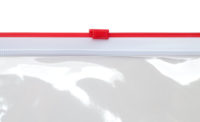Packaging is arguably a brand’s most important marketing vehicle. Packages directly impact purchase decisions at shelf, influence satisfaction and usage in the home — and they serve as the embodiment of the brand across all media, from advertising to social media. Yet while marketers regularly benchmark product performance and track the impact and wear-out of their advertising, very few apply a similar discipline to the timing of their packaging decisions. Instead, pack changes are typically reactionary. They often come in response to declining sales, changes by competitors, or concerns expressed by sales teams or consumers in focus groups and online forums. The most common driver of pack changes is the arrival of a new marketing team eager to make its mark quickly via design changes.
Editor’s Note: This story originally published in BRANDPACKAGING, a sister publication of The National Provisioner in the BNP Media portfolio. Read the story here.









